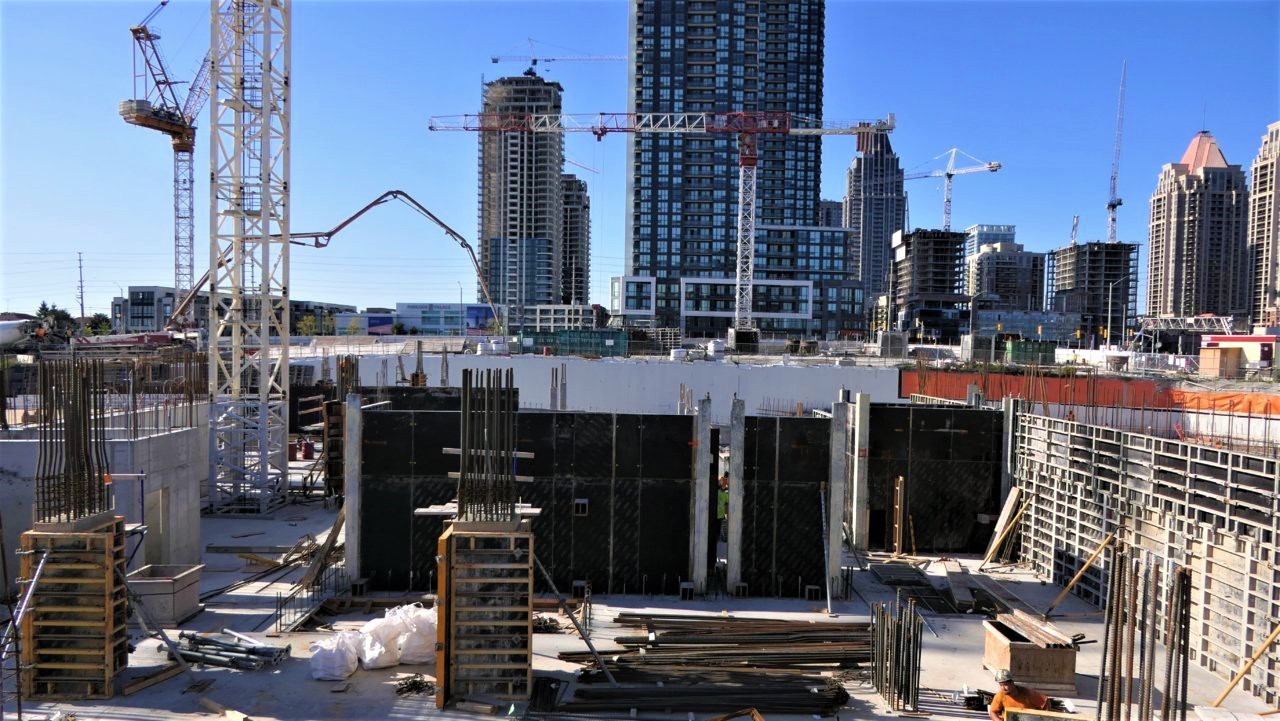
Pandemic helps Mississauga’s NIMBY narrative standing in the way of urban transformation
“It’s going to leave the street in shadow half the day,” a resident remarks to a neighbour, passing by a development proposal sign posted on Lakeshore Road.
Moments later, a couple in their mid-20s stop at the same spot, smartphone in hand. One searches the building online, browsing renderings of its apartments and their balcony views of Lake Ontario. “Probably out of budget, but it looks amazing,” they agree.
The decision about how and where someone wants to live, what they want to see around them everyday, and the space they want at their disposal 24/7, to fulfill a whole range of psychological needs (private time in an office or den; enjoying a cool drink on the back deck; watching a movie with the kids; or having a zen afternoon cooking in a gourmet kitchen) is the most important choice we make. Decisions about how a neighbourhood should age and mature are deeply personal. Some need wide open spaces, others don’t even like being confined in their residence, opting for neighbourhoods and locales with plenty of “third places” to gather or relax or be entertained. Younger residents may hope to walk straight out of an air conditioned lobby into a local bar.
For those who own their house and have called one place home for decades, changing their neighbourhood, and the very spirit of the place where their memories exist, can be filled with emotions. Attachments are incredibly grounding.
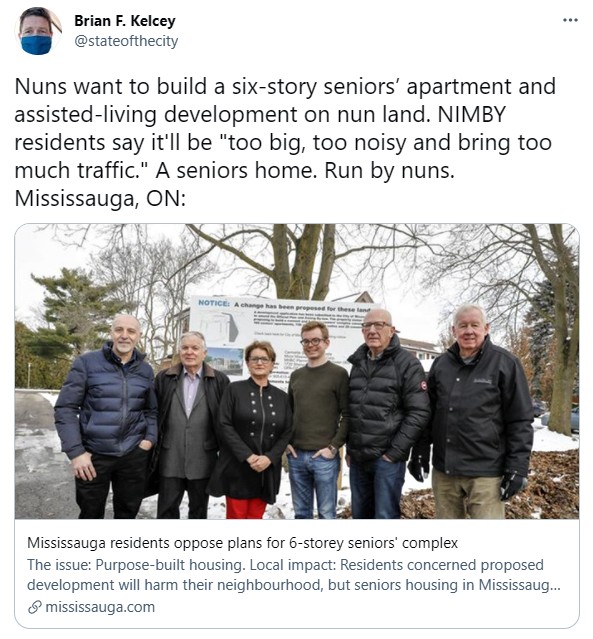

NIMBYism, like when it's feared nuns might run a rowdy residence, often goes overboard.
If you bought in an area for its particular feel and character, anything that alters the mood is unwelcome. Converting an old Church into condos wipes away years of memories; transforming a charming open-air plaza into highrises might mean the end of the restaurant you proposed in.
But time waits for no one.
Mississauga’s plans for urbanization have unfolded rather swiftly without too much opposition. Unlike other municipalities that seem stuck in the past, the country’s sixth largest city is booming.
Outside forces are driving urbanization: population growth, housing unaffordability and, perhaps most pressingly, climate change – all require cities like Mississauga to get denser. The splayed subdivisions, responsible for attracting so many homeowners to the city, represent yesterday’s planning. Many need to be densified and updated.
One of the reasons vertical growth over the last two decades has unfolded with little outcry, is the lack of residential attachment to most of these areas. It has happened around a major shopping mall and in pockets where open land, bought long ago from farmers or industrial companies, sat empty for decades. They are now quickly filling in.
So far, the major density projects in Mississauga have been relatively unintimidating and saved for areas that aren’t really lived in. Square One, which will host 37 towers built by Oxford Properties, is dominated by parking lots. Lakeview Village and Brightwater, set for massive growth on the waterfront, were both industrial brownfield sites.
“At one level, you see very high density nodes, you see developments wherever developments can happen, especially when it doesn’t come into contact with other residents. You see very high density,” Matti Siemiatycki, an urban planning professor at the University of Toronto, tells The Pointer. “Then you see parts of the city that have changed very little and some ways are even less intense and less dense than they were at the time when they were built.”
In Mississauga, where greenfield development is a thing of the past and single-family homes make up the largest land use, a reckoning is coming. Many residents want to see density placed anywhere but their own homes, even while accepting the city has to change.
“I suggest to you that the proposed development is not an example of urban intensification, rather it is an example of overdevelopment,” Ward 7 resident, Edward Maksimowski, said at a recent Planning and Development Committee meeting. His words, referring to plans to build an apartment block beside two existing apartment buildings and a subdivision, are a constant refrain at the fortnightly meeting. Local residents gather to oppose projects that could overshadow their family homes, ruin their view or clogg roads.
“The proposed 15-storey Goliath would tower over the homes on Privet Court and Privet Crescent, negatively affecting neighbourhood sightlines, sun exposure, privacy by way of overlook and they would invade the community with noise, light and air pollution.”
These types of concerns are raised by certain neighbours across North America. Anywhere people settled following the Second World War, a majority did so to recreate a sense and feel of the rural, not the urban. Thus, the suburbs were born.
And now, as places like Mississauga, faced with mounting realities about the untenable consequences of suburban design (including excessive property taxes to maintain costly, sprawling infrastructure that has to cover three and four times the space of urban areas) try to transform, many of those citizens who bought into a dying dream feel left out.
Real estate trends in 2020 show it’s not just a few vocal residents who are unhappy, buyers are echoing the same statements with their hard earned cash. Despite rental vacancy rates in Mississauga finally increasing a little, historically low interest rates have seen local house prices increase by double digits over the past year.
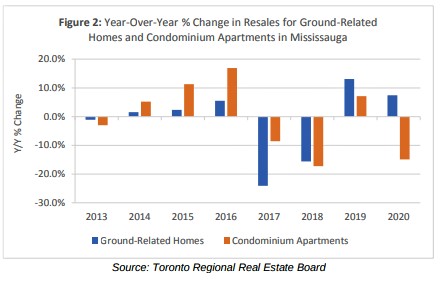
An emphatic local rejection of density took place, linked, at least in part, to COVID-19 and a desire for personal space, with the number of condominium apartments available for rent up 90 percent year-on-year. In parallel, the number of condos being sold dropped 15 percent, while the number of ground houses (including single-detached family homes) increased 7 percent. It marks the second consecutive year in Mississauga that ground-related homes have been more popular than dense apartments and condo buildings.
This pandemic-induced turning point requires leadership.
The impending threat of climate change, drastically worsened by cities built around single-family homes and the car, alongside growing populations means Mississauga needs to change its DNA. Elected officials have a role to play in convincing residents some changes are necessary, and good for them.
Yet some around the council table have taken it as a sign that density won’t work in Mississauga. Ward 7 Councillor Dipika Damerla spent much of the previous week, both at the Planning and Development meeting and then again at Region of Peel council, talking about the need to provide every resident with a backyard.
“I think we have tried to over engineer by trying to talk in terms of intensification. [It is] about recognizing there is a happy middle,” she said on March 8. “We keep hearing about homes not being affordable. The reality is, they’re not affordable because everyone wants a patch of grass and we’re not building that.”
“We can’t just build tall, have vertical sprawl, because there isn’t demand for that. It’s not human scale and it’s not what people want,” she added.
Damerla does not use data or research when she makes her pronouncements. She has revealed that it’s mostly older, single-family home owners who she listens to. It’s no coincidence that the politically calculating councillor chooses to cater to only one demographic, the one that overwhelmingly turns out to vote. Her vote-counting-as-planning-policy raises serious concerns. She has already won the Liberal nomination to contest the next provincial election, after losing her seat in 2018. She jumped over to municipal council, as a consolation, which she now wants to walk away from. But her decision making still impacts the municipality's obligations to meet its growth plans.
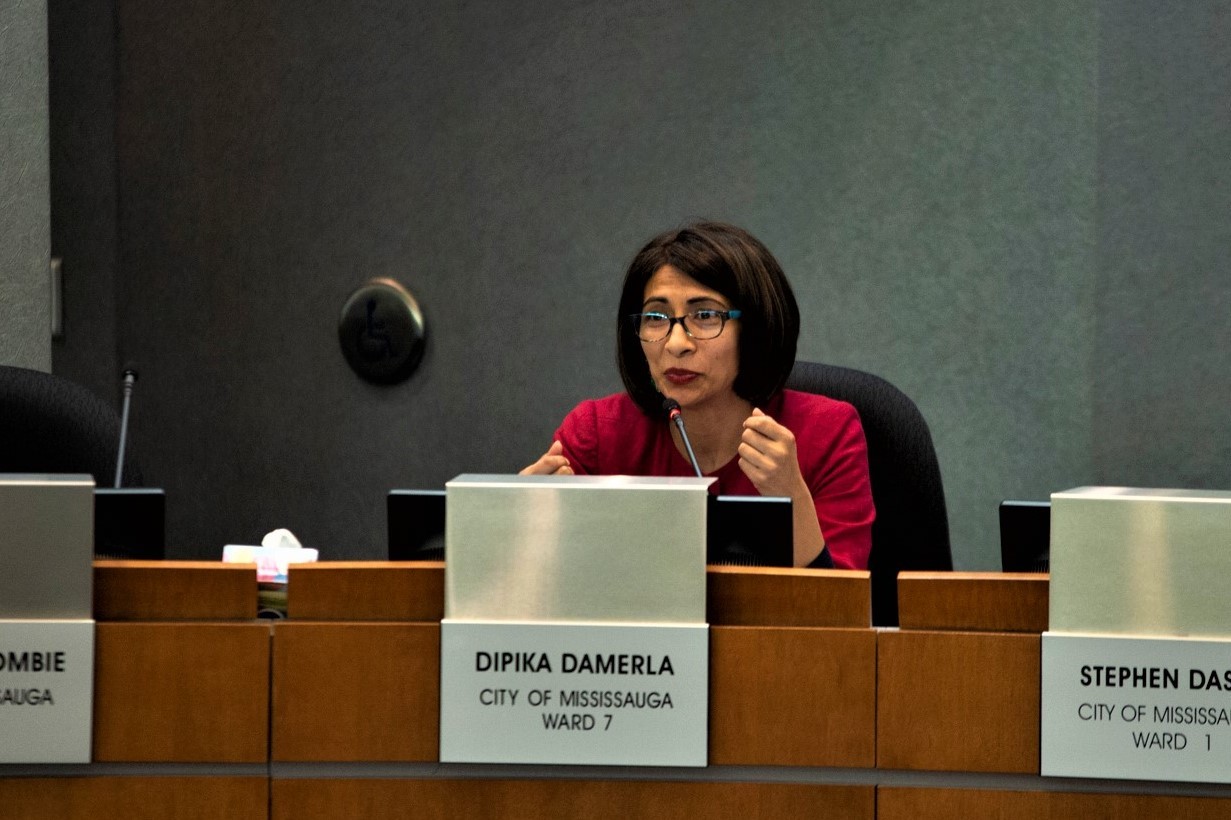
Mississauga Councillor Dipika Damerla has often opposed density.
Younger voters and those who don’t want to inherit sprawling, executive properties, could send her a message, both at the provincial polls, and, if she loses, during the next municipal election shortly after Ontario’s.
Otherwise, her shameless vote counting will be rewarded. Pandering to older voters at both levels just to hang onto a job, at the expense of issues such as climate change and modern planning, would show Damerla that her style of leadership gets rewarded.
Her words at meetings may be popular with many voters, but others, including staff responsible for the city’s future growth, shudder.
A key benefit of density is more people living on each hectare of land, making it more efficient to deliver services to them. Transit and wastewater, for example, become cost-effective and efficient. Mississauga Fire and Emergency Service lists advantages to new, dense builds including fire suppression systems, the ability to enter apartment blocks to pre-plan operations, emergency lighting and non-combustible construction that can limit fires to a single unit. Emergency response times, which are currently dangerously beyond requirements, would also be dramatically reduced.
At the provincial level, despite Damerla’s desire to return there, the density she opposes greatly benefits the funding of healthcare and education, and the efficient delivery of these crucial services.
Once towers have been built into the last few remaining spots they won’t directly interfere with subdivisions, they’ll keep popping up along major roads. However, as Toronto is currently experiencing, even single-detached houses could be used to make way for multi-unit buildings. Under recent provincial legislation, GO stations and LRT stops are two publicly funded pieces of infrastructure that will be specifically designed to attract surrounding density.
Home owners across much of the GTA are going to see their neighbourhoods transform. It’s inevitable. Close to three million newcomers will settle in the area in the next 25 years. That means almost the current population of Toronto will be added to the GTA in just two-and-a-half decades.
If Damerla thinks they will be pushed out to the Greenbelt and beyond, maybe she should run for the PCs instead of the Liberals. And if she wants to push policy that hurts the environment and adds to climate change, perhaps she should reconsider her political affiliation.
Rather than capitulating to a group of residents, City Hall could be selling the benefits of density. Your tax increase could be lower; your transit service more frequent; your streets cleared of snow faster; and your parks filled with new amenities paid for by developers.
“A lot of this is about political theatre and the politics of development, which seem to create adversaries very quickly,” Siemiatycki says. “Change is always difficult and this is one of those spaces: what role does the planning department have as compared to the politicians? The loudest members of communities often tend to be the ones who also vote, can also mobilize the vote, so that has played a big role here… I don’t think there’s a formula to change people’s views on this. I think these are just the types of debates that get debated, block by block at the moment.”
City staff are well aware of the benefits, but often find themselves carrying out the wishes of councillors thinking about the next election. Damerla, as evidenced by her efforts ahead of the provincial election, is clearly more consumed by her campaign planning than the city’s planning.
“I would like to thank Mississauga East-Cooksville Liberals for once again placing their trust in me to carry the banner in 2022,” Damerla said last year, after getting the provincial nomination. “I’m excited to join a diverse team of candidates, united behind a plan to improve the lives of people in Mississauga East-Cooksville and across Ontario.”
Meanwhile, City staff are busy moving council-approved policies forward, including a range of plans to introduce more density.
“It reduces the need for extensive travel to fulfill the needs of day-to-day living by keeping different land uses close together,” a spokesperson for the City, on behalf of the Planning and Building Department, said. “This allows walking and cycling to be convenient alternatives to the car. Locating high density development along existing and planned rapid transit lines makes the best use of this infrastructure and also reduces dependency on cars; this in turn helps to slow the increase in traffic congestion. Compact urban living helps to minimize the impact on our environment, promotes public health and supports development that is sustainable.”
The barrier that planners face is the old suburban dream that still rings true for many, and politicians like Damerla who aren’t interested in actual leadership.
Residents like 45-year-old Vinny Rao have seen enough sprawl for a lifetime.
“We just keep going in that direction and we’re running out of resources, the price just keeps going up,” he told The Pointer. “I’ve had an experience that has been very unique, all of my peers and all of the people in the 35 to 55 age bracket that I hang at the pub or know from work or such, not only do they not tend to care, but it’s also because they don’t really know better. They don’t really have the same outlook literally on life on earth.”
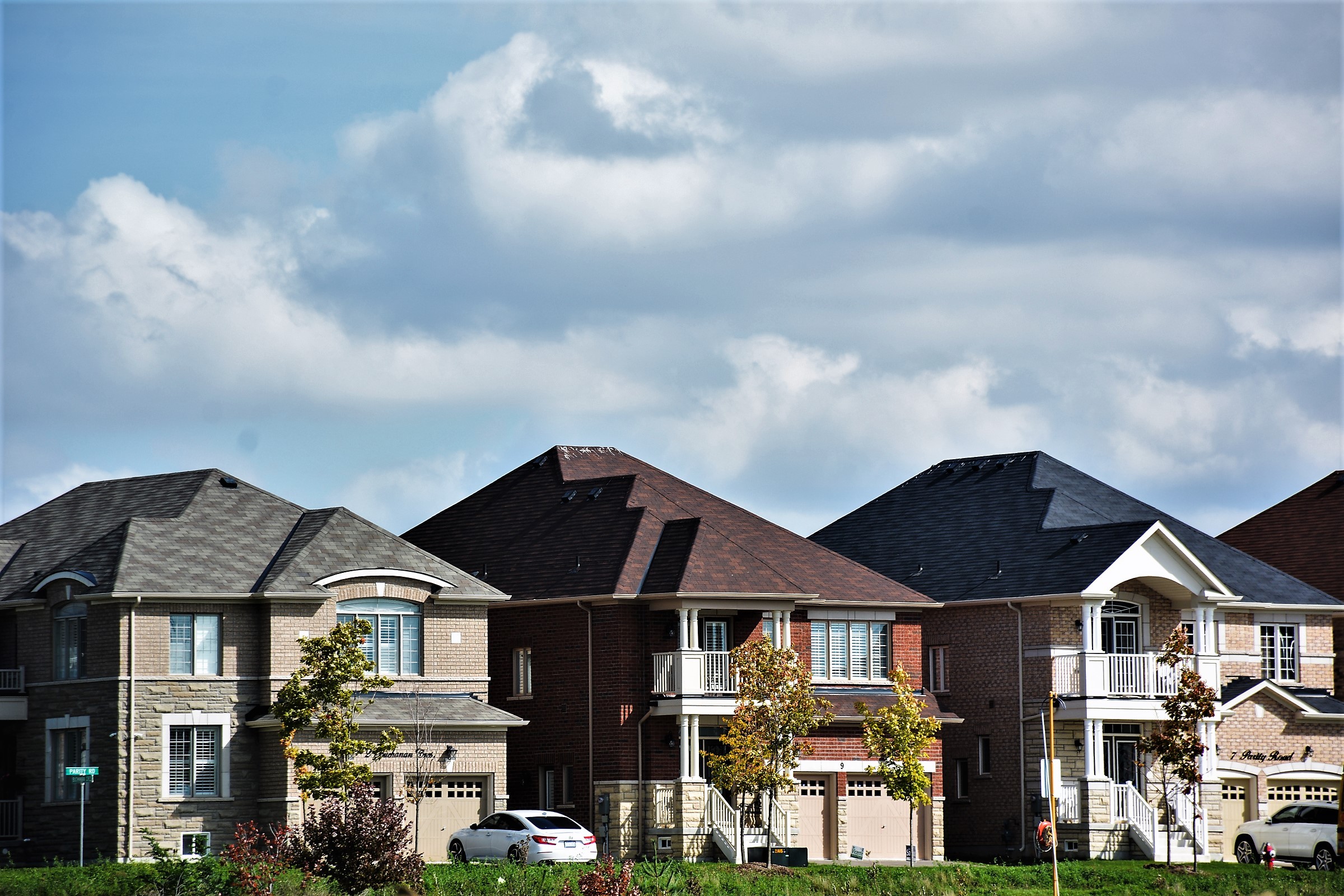
The suburban dream is something many residents refuse to give up and the pandemic has reinforced their desire for space.
An education campaign by City Hall could go a long way to change hearts and minds, at least for those unsure about what they want in the future. Rather than waiting for developers to come in with towering applications, sitting back and listening to furious residents and then facing an impossible choice, councillors and the City could arm residents with the tools they need to appreciate the benefits of density, call out applications that are not interested in community building and suggest their own compromises.
Some local residents have been willing to embrace density and still got stung.
The Lakeview Ratepayers Association worked with the City of Mississauga for several years to develop a plan for the Lakeview lands, once the site of a coal-powered electricity generation plant, that would house moderate density. The plan, entitled Inspiration Lakeview, was finalized and sold to a developer in 2018.
In the years that followed, the site was made taller and denser, as the developer looked to maximize profits. To make matters worse, in the eyes of many local residents, the project has set a precedent for height and density for the entire ward.
“Part of the deal was that we had the Lakeview, or the former OPG site that we knew could take the density out of the Lakeshore and the Brightwater site. There were two bookends that could take the density,” Deborah Goss, president of the Ratepayers Association, told The Pointer. “It’s a bit unfair when you've got a community that basically prepared for it and agreed with it, that went along with all the professionals and the academics and everybody who worked on it, then you actually then use it against the community to say, ‘We can put density anywhere now.’”
Recent development applications in the Lakeview and Ward 1 area have raised the ire of local residents and politicians. Both are frustrated at developers exceeding the local Official Plan in an attempt to maximize returns on their site — but no one seems to be offering an alternative.
Siemiatycki describes the tension between guiding documents like a city’s official plan and the view of residents and councillors on the ground. He suggests a reality that is not conducive to comprehensive city planning driven by future-ready strategies.
“I think you have this grand sort of debate at the municipal level and then its block by block, depending on what’s happening at the local scale.”
Email: [email protected]
Twitter: @isaaccallan
Tel: 647 561-4879
COVID-19 is impacting all Canadians. At a time when vital public information is needed by everyone, The Pointer has taken down our paywall on all stories relating to the pandemic and those of public interest to ensure every resident of Brampton and Mississauga has access to the facts. For those who are able, we encourage you to consider a subscription. This will help us report on important public interest issues the community needs to know about now more than ever. You can register for a 30-day free trial HERE. Thereafter, The Pointer will charge $10 a month and you can cancel any time right on the website. Thank you.
Submit a correction about this story


